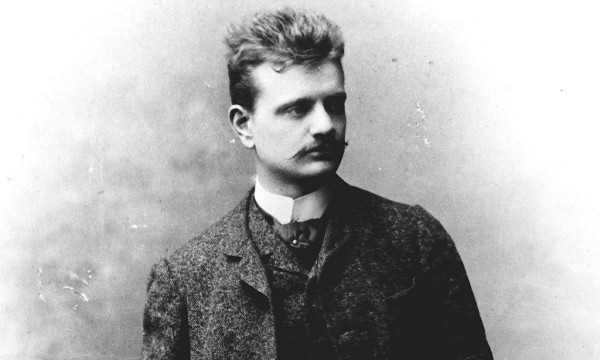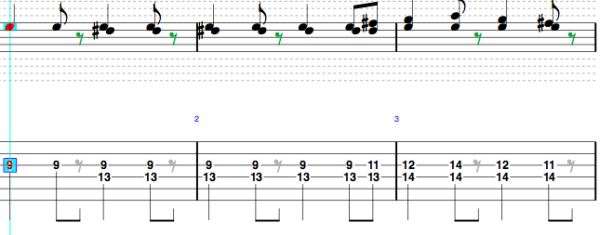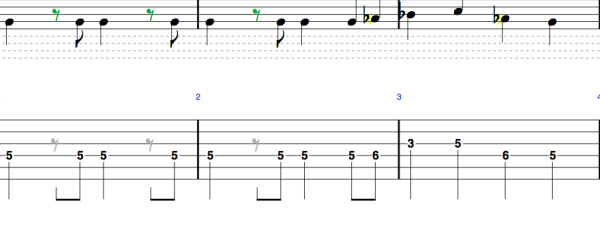The slow evolution of Western society (and in consequence of the whole world) into the post-modern paradigm arising inevitably from the purely mechanistic cosmovision of the Enlightment sciences, which in the best of cases allow for a Cartesian separation of the physical and the spiritual, pervade every corner touched by the status quo culture. This results in a relegating of anything which cannot be explained or described in purely mathematical terms to what is referred to as ‘subjective’. Anything that is experienced but cannot (yet) be explained is assumed to be subjective. There would be a certain justice to this if the phenomena that are still unaccounted for by science were squarely placed in a category under a truthful label by the establishment confessing: “We don’t know how to explain this in our terms, but that does not mean it is any less real or without possible objective basis.” What takes place is an arbitrary classification of these into morally-justified beliefs when they are in line with the status quo and into so-called subjective experiences when they are not.
The views held by society must be enforced in every discipline precisely because they are the result of dogma and not actual science (a word unfortunately hijacked by a corrupt establishment lead by weak minds elevated to positions of prestige and power by other weak minds). It follows that dogmatic belief cannot be challenged at any level since any divergence spells out potential intellectual catastrophes and conflicts that are not guaranteed to be won by the powers that be. As a result, not only does education suffer in the form of indoctrination but so do the supposed heroes of objective knowledge that the sciences are said to be comprised of turn into the priests of the temple to whatever the hive believes. It is only to be expected, then, that the humanities and the arts are the most easily and selectively suppressed, limited or made irrelevant, since the processes and phenomena studied by them are even further away from the grasp of mathematical explanations.
In the Western classical music tradition, the tenets of the Common Practice Period have been put into question for a very long time in progressively derisive waves. Very often, revolutionary thinkers that spearheaded such contrarian views had transcendent and elaborate reasons that motivated and justified their moving-beyond. But the hordes of followers understood only a portion of this, often inclined towards its most easily understood materialist explanation. In the case of Beethoven, followers of his defiance of what was expected of music were shielded from degeneration by the very fact that the then contemporary German culture was a very spiritual one, and its artists still acknowledged the magic behind music — occult properties and processes that can only be perceived but not fully explained. Contrastingly, in the age of Anton Webern, his decision based on artistic principle to move away from traditional harmony to work with a self-defined and logical set of rules that he would use without falling into an empty materialism was taken up as fashion — the next “big thing” in classical music development. This directly reflected the way Western society saw the world around it at the beginning of the 20th century: as its playground, where anything “I like” goes and the capricious human will is allowed to do whatever it wants because we are the nihilist masters of the natural world. Gone was the romantic respect of nature and its view of humans as part of it. We must ask ourselves what dissolved the old German mysticism? The simple answer is that they, too, had to change, even if slowly and reluctantly, in order to not be destroyed in a world dominated by French Enlightment and overarching Russian influences — both with primarily materialist tendencies.
Music theory is one such set of occult properties. Yet it is only occult (hidden but observable) because there is no theory developed for the relation between arranged sound frequencies and mental states, especially at increased levels of complexity. Contrary to what scientifically-ignorant artists think, this is neither impossible nor irrational, just difficult. Contrary to the beliefs of Blank Slate – indoctrinated scientists, the study of innate human nature can yield explanations as to why, as a species, certain tastes, visual and sound arrangements and textures have certain effects on the mind (itself rooted in chemical states of the brain). The reason why both groups tend to back away from such ideas is not rooted in reason, but in the fear of not being acknowledged for who they are, which for them translates into what they want, like or prefer to believe to feel validated. In other words, reality is shunned in order to give way to a truth built on the necessities of feable human egos. The ramifications are manifold and most are out of the scope of this article.
Out of the accusations levelled against Common Practice Period theory, one of the most common and often accepted is that it somehow limits the imagination of artists. Presumably, this is because its rules define a perimeter around permissible options in a finite-state machine, thereby prohibiting the random allocation of space and time to music tones selected purely out of gut feeling. And that precisely is one of the defining factors of the post-modern vision of art. At this point, it may seem like I am contradicting my previous statements regarding the possibility of harmony rules being developed and justified on the basis of human nature. If they are, then an artist following only his gut feeling should arrive to at least similar results. First, that these rules are based on human nature does not mean they are free of the constraints of their historical context, including not only cultural implications but also material possibilities for the construction of certain instruments with particular timbres. Second, the rules were developed through collective observations and philosophies over hundreds of years by many different people building on top and beside one another– in the same way that mathematics and modern science were gestated.
While older attitudes were nature-oriented, and tried to keep their understanding of human nature in line with what was then understood of the natural world, the Enlightment sees a rupture between them as a necessary effect of placing human beings over nature as overlords to do as they please with it– thereby setting them beyond judgement within it. It was an ideology-based decision, not a scientific one. As a result, there are those, especially among the post-modernist classical artists, that are not guided by a free search for musical perfection, but by contrarian and politically-charged statements that can only be described as the ultimate incarnation of a hipster’s dreamworld.
The comparison to mathematics is in dire need of further elaboration as it contains the potential to elucidate much about what musical theory is and what it is not. We may start by stating that they are both tools and means to an end. Admiring the organization and arrangement of a music passage on grounds of technique is akin to feeling a sense of wonder when shown a beautifully and clearly derived mathematical formula. But neither of them by themselves attest to the accuracy of the connection of these to reality itself. Both musical and mathematical theory are dependent on premises — they are both arguments developed from a set of assumptions which may reflect conditions and events in the real the world.
Common Practice Period theory arose from organizing tones in the spectrum of perfect consonance to most extreme dissonance as perceived by human beings. Not one human being arbitrarily writing up rules, but scores of audiences reacting to the works of many different composers through lifetimes. Each composer taking notes on the triumphs and blunders of those that came before them and adding their own ideas. It was a veritable scientific effort of occult nature. The fact that the notes were taken not from one society at one point but by the cumulative effort many through many generations also somewhat lends to the tradition a tendency towards the transcendental. Of course, this is completely dependent on a healthy balance between acknowledgement of tradition (whatever that tradition is for the artist) and a continuation of its ideals with a progressive intent.
To round off the metaphor of mathematics, we should stress that no development invalidates or properly subordinates older techniques to newer ones. This fallacy is so pervasive that it is common to hear people referring to the use of newer techniques in themselves as a sign of superior expression. This is related to the malady that is born from the cult of novelty. In truth, when it comes to mathematics, if one person solves a problem using simple algebra yet another fails using calculus, it is obvious that the simple use of a more sophisticated technique is not in itself superior. It may be true that in art and music we do not have the luxury of calling something right and wrong, but the comparison is done in parallel and not on the same plane as mathematics. This is the same as when Newton developed Calculus, he did not ditch arithmetic and algebra developed hundreds of years before he was born, but used them to build this tool that would allow him to develop theories concerning abstract models of the physical world.
Nobody is saying there is a right and wrong dichotomy in music. In fact, this is where it is necessary to part from the analogy. Music is much more comprehensive and complex than mathematics (which only has a cumulative complexity, not a multi-dimensional one). Mathematics is comparable to music theory, the tool, and not to music. Music is the resulting idea crystallized, probably through the use of music theory techniques, the same ways physics derive explanations of the universe by using different techniques from mathematics. By its occult nature, music’s domain being states of mind and evocation, what we do have in music is degrees of esoteric communication through sensory perception. It is a communication at many levels rather than only at the level of reason and goes beyond it and to our instincts and learned behaviors which as a total reflect a unique vision from a unique individual. “Personal taste” advocates need not get too excited as the variation can only be as wide as human minds allow — which scientific research shows is not as much as we like to think. Variation is wide with respect to how we see ourselves, but not that wide when we see the whole spectrum of possibilities. And as an occult discipline guessing at phenomena of the universe (and our mind in it) that we do not understand, music is more liable to wander off more than mathematics in its search for perfection.
https://www.youtube.com/watch?v=yGNh5BYJke0
Music as the manifestation of experience, as a gateway to purposely changing states of the mind in humans, is something that stands at odds with the idea of absolute music, for which music aesthetics themselves are the goal. This materialist vision based on the fact that current (this is a 19th century idea) scientific limitation of not yet having a mathematical model outside of aesthetics and certain organization cannot accept or encompass the higher-level processes of creation that reach for proportion, balance, direction and movement in an attempt to communicate. Ironically, it is rather this lack of tradition or significance that results in theory and rules being all there is that produces a much more limiting paradigm. The race of stretching aesthetics could only go so far and an artistic compound devoid of transcendental goals quickly gave up as they broke the boundaries of tonality, declaring music as we know it to be dead. Needless to say, this was as short-sighted as limiting literature to the number of “clever” arrangements of words — precisely the dead end of poetry without meaning, or poetry without form, all products of post-modernism. In any case, the disavowal of all meaning leads to music pursued as a sport, for the excitement that its physical acrobatics produce and not from what it communicates in and beyond its forms.
The other branch of a materialist appreciation of music surfaced more clearly in the freedom afforded by the post-modernist world to idiots to call themselves artists and plague us with moronic musical expressions supporting themes of self-pity communicated only through lyrics. Going further, many artists not only took this liberty but openly rejected any sort of tradition or knowledge as being only an obstacle for their expression. Again, ironically, their rejection of it resulted not in a revealing work transcending the ages, but an extremely simple product that even a child banging on the wall and singing with no thought or experience could produce.
This is not to say that you need theory to create good music. As was explained before, theory is only a tool based on cummulative observations over many lifetimes. We do fine geniuses and other people with an outstanding aptitude for music creation who will find ways to create solid music that is often technically rudimentary but complex in communication.
https://www.youtube.com/watch?v=w9P99BCrKgc
As with any mathematical techniques or grammar in language, theory augments and sharpens the natural talents of the person. But the catch here is that the artistic intent and vision of the artist is often as important as his natural aptitude towards creation. Whereas a Varg Vikernes consistently tries to find an ever-more ephemeral depuration of the essence of his music against the tides of trends in what is fashionable, a Luc Lemay gets lured in by what is chick, his talents wasted on kitsch. Granting a directed vision of music in a clear direction rather than with vague adjectives to justify fashionable aesthetics, the person with average talents can, with appropriate training and dedication, become a Franz Berwald, while the talented may reach the heights of Johannes Brahms.
The importance of following a transcendental route versus a materialist one are exemplified in two products of the 20th century. One followed the mechanistic descriptions of music to the point of absurdity and was hailed as a genius by the hipsters crowding the halls of academia. These were the many frauds of John Cage. Intellectually interesting experiments devoid of the basic dimensions of music: melody, rhythm and harmony. Contrasting the first comes a work that attempts to communicate a sense of wonder in nature without the vulgarity of dissoluting music proper for recordings of nature or other cheap tricks of post-modernism. This is the Fourth Symphony of the romantic Jean Sibelius, reviled by academic theorists and critics looking forward to the mechanistic augmentations of aesthetics and possible transformations rather than for the actual content of music. This was music for the music fan, not the ironic intellectual.
https://www.youtube.com/watch?v=Yybn6iKmYdQ
https://www.youtube.com/watch?v=zl_q1QDkiiw
28 CommentsTags: classical music, incantation, jean sibelius, johann sebastian bach, john cage, metal, music theory, Nirvana







